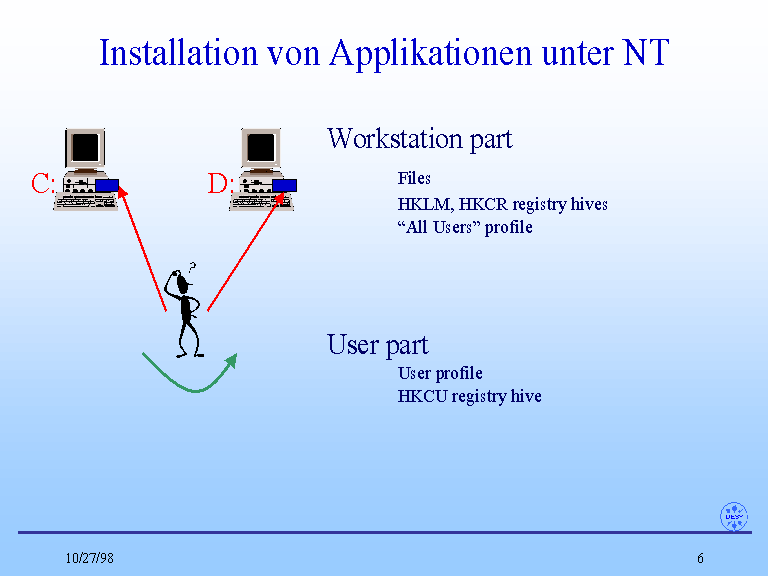Slide 6 of 28
Notes:
As I just said, an installation with NT requires to distinguish between the workstation and the user part of an installation. All files copied to the local disk belong to the workstation part. Also the registry hives HKLM HKCR.
The user profile and the registry hive HKCU belongs to the user part. This part contains (or should contains) the user dependent settings of an applications, so you want this part to travel around with the user. This is called a “roaming profile”.
The problem of this construction is that we need both parts of an installation. But what happens, if the first user installes an application and gets his user part, a second user logs on to the workstation and wants to use that application. He comes with his roaming profile without the user part of that program. To ensure that both parts of the installation have been performed the application is not started directly, but an application starter is used to check this, optionaly install the missing part and afterwards execute the application. (This is meant by SOD)
But what happens if the user there are dependencies between the user part and the local disk ? What happens if the user has a shortcut to an application in his profile and he logs onto another machine with different local drives / locations or different software installed ? This shortcut does not work properly! --> Consistency ?















